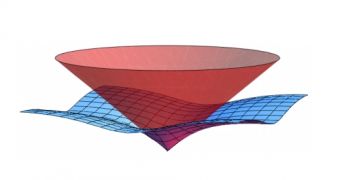The Matrix is just a movie trilogy, but even so, there are those who think it depicts the truth, or at least consider it something that, though unlikely, is at least possible in the grand scheme of things.
University of Bonn nuclear physicist Silas Beane and some of his colleagues have devised a test that can check, once and for all, if we really live in a simulated virtual world.
By using a discrete 3D lattice (similar to 3D graph paper), they can monitor the strong nuclear force in an atom and how it works over time on a femto scale.
The theory of quantum chromodynamics describes the nuclear force that binds quarks and gluons into protons and neutrons, which bind, in turn, to form atomic nuclei. It is the best substitute we have for simulating the whole universe.
The lattice is used here because its spacing imposes a limit on the energy that particles can have, meaning that nothing smaller than the lattice itself can exist.
Thus, if this is a computer simulation, there would be a cut-off in the spectrum of high-energy particles, like cosmic rays, after a certain point.
Coincidentally, there is such a cut-off, the Greisen-Zatsepin-Zuzmin (GZK) cut-off, but it has a justification: the interaction with the cosmic microwave spectrum causes cosmic rays to lose energy.
That leaves the lattice spacing as the only thing that can determine whether this is a simulation or not. In a simulation, distances would have a fixed minimum, unlike the real world. Thus, if the cosmic rays would travel preferentially along the axes of the lattice, instead of going in all directions, it would prove that our universe is one big virtual simulation.
"The numerical simulation scenario could reveal itself in the distributions of the highest energy cosmic rays exhibiting a degree of rotational symmetry breaking that reflects the structure of the underlying lattice," Beane and co. say.
Current technology can be used to conduct such a test, but it has some caveats. For instance, the effect is measurable only if the cut-off is the same as the GZK cut-off (anything smaller will draw a blank). There is also the possibility that the universe was constructed in a way completely different from how they envisioned it.

 14 DAY TRIAL //
14 DAY TRIAL //